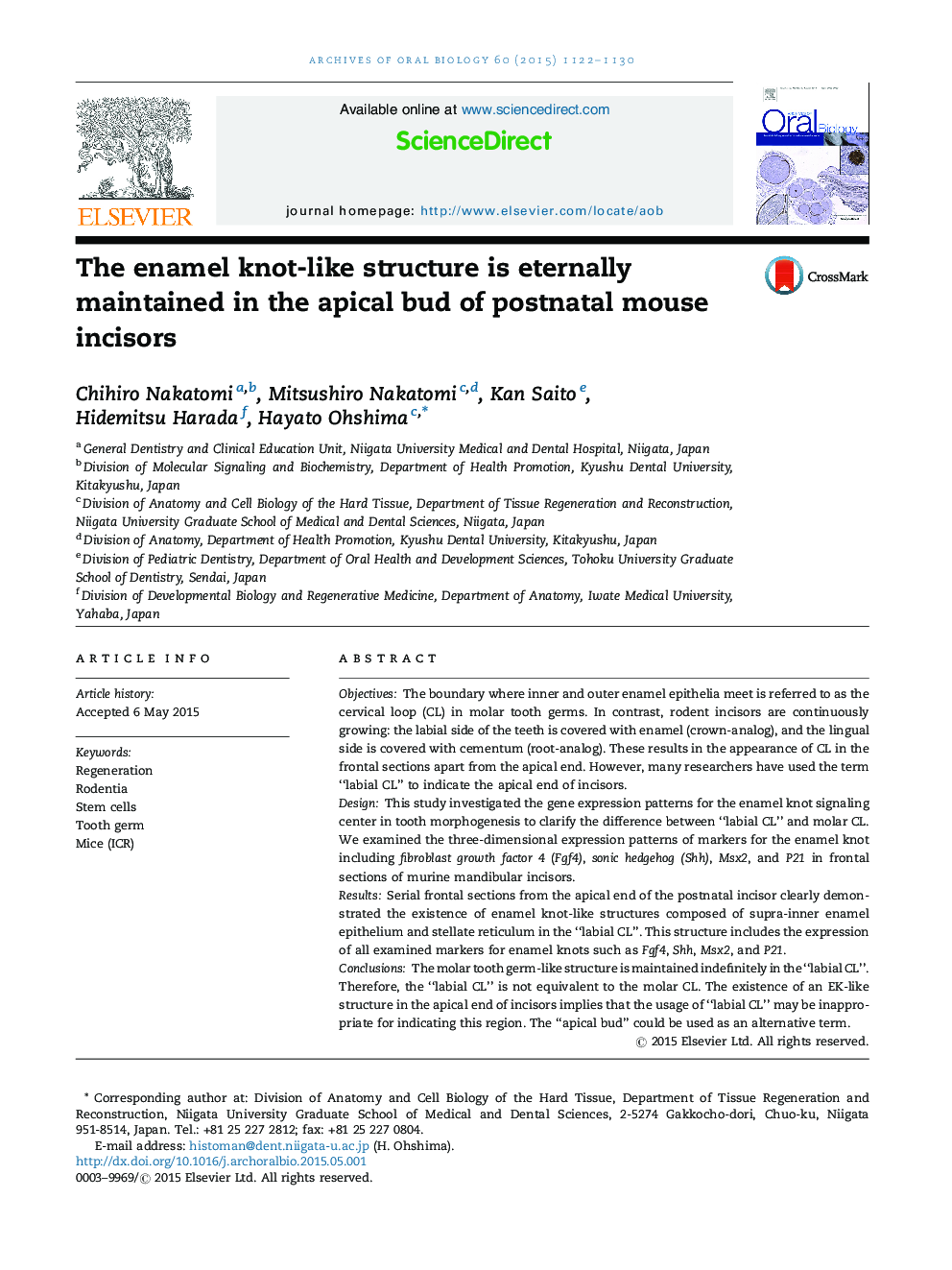| Article ID | Journal | Published Year | Pages | File Type |
|---|---|---|---|---|
| 3120756 | Archives of Oral Biology | 2015 | 9 Pages |
•An enamel knot-like structure exists in the apical bud of mouse incisors.•An enamel knot-like structure includes the expression of Fgf4, Shh, Msx2, and P21.•The tooth germ-like structure is maintained indefinitely in the apical bud.•The term “apical bud” is encouraged to be used for the epithelial stem cell niche.
ObjectivesThe boundary where inner and outer enamel epithelia meet is referred to as the cervical loop (CL) in molar tooth germs. In contrast, rodent incisors are continuously growing: the labial side of the teeth is covered with enamel (crown-analog), and the lingual side is covered with cementum (root-analog). These results in the appearance of CL in the frontal sections apart from the apical end. However, many researchers have used the term “labial CL” to indicate the apical end of incisors.DesignThis study investigated the gene expression patterns for the enamel knot signaling center in tooth morphogenesis to clarify the difference between “labial CL” and molar CL. We examined the three-dimensional expression patterns of markers for the enamel knot including fibroblast growth factor 4 (Fgf4), sonic hedgehog (Shh), Msx2, and P21 in frontal sections of murine mandibular incisors.ResultsSerial frontal sections from the apical end of the postnatal incisor clearly demonstrated the existence of enamel knot-like structures composed of supra-inner enamel epithelium and stellate reticulum in the “labial CL”. This structure includes the expression of all examined markers for enamel knots such as Fgf4, Shh, Msx2, and P21.ConclusionsThe molar tooth germ-like structure is maintained indefinitely in the “labial CL”. Therefore, the “labial CL” is not equivalent to the molar CL. The existence of an EK-like structure in the apical end of incisors implies that the usage of “labial CL” may be inappropriate for indicating this region. The “apical bud” could be used as an alternative term.
